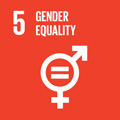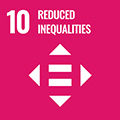- Docente: Patricia Gomez Soler
- Credits: 5
- SSD: L-LIN/07
- Language: Spanish
- Teaching Mode: Traditional lectures
- Campus: Forli
- Corso: First cycle degree programme (L) in Intercultural and Linguistic Mediation (cod. 8059)
Learning outcomes
Students can use the tools (grammars, dictionaries and textual corpora) and the methods ( analysis of a text before translating it and its transposition into the final text) and can apply these methods to a variety of simple texts from Italian into Spanish. Besides students are able to identify and apply the most adequate translational strategies to the operative/communicative functions of the texts to be translated.
Course contents
The course (40 hours - CFU) will be held in the second semester and together with the course Translation from Spanish into Italian I (which will be held in the first semester instead) constitutes the course Translation between Italian and Spanish I.
The course aims to provide the students with the basic elements of the theories and practices of translation (Italian > Spanish). During the course, activities aimed at comprehension and production of texts of increasing complexity belonging to different text types will be carried out. The focus will be on textual analysis and translation as a contextualized communicative event, emphasizing the dynamic relationship between linguistic choices and the situational and cultural framework.
Objectives:
- Develop the ability to understand a written text: develop linguistic-communicative skills and technical, semantic, syntactic, textual and pragmatic-communicative sub-skills; cognitive skills in textual comprehension (ability to make correct predictions and inferences) and encyclopedic-cultural skills.
- Develop written competence, with a focus on linguistic and communicative skills for the preparation of different types of texts in Spanish.
- Develop translation competence: develop the ability to analyze in-depth the source text; acquire the ability to reformulate in Italian and Spanish; identify translation problems; activate translation strategies; stimulate reflection on translation problems between related languages; know and use lexicographic resources appropriately.
Readings/Bibliography
The texts that will be used in class will be available online.
Dictionaries:
Arqués, R. e Padoan A. (2012): Il Grande dizionario di Spagnolo. Dizionario spagnolo-italiano italiano-spagnolo. Bologna: Zanichelli.
Bosque, I. (2004): Redes: diccionario combinatorio del español contemporáneo. Madrid: SM.
[CLAVE] Diccionario de uso del español actual (2007). Milano: Hoepli.
[DICE] Diccionario de colocaciones del español (http://www.dicesp.com/ ).
Diccionario de sinónimos y antónimos (2012). Madrid: Espasa Calpe.
[DRAE] Real Academia Española (https://dle.rae.es/contenido/actualización-2022 [https://dle.rae.es/contenido/actualizaci%C3%B3n-2022] ).
Fundación del español urgente (https://www.fundeu.es/ ).
Garzanti (2009): I grandi Dizionari Spagnolo. Milano: Garzanti Linguistica.
Moliner, M. (1998): Diccionario de uso del español. DUE. Madrid: Gredos.
Real Academia Española (2005): Diccionario panhispánico de dudas. Madrid: Santillana.
Real Academia Española, Corpes, Corpus del español del siglo XXI (https://www.rae.es/banco-de-datos/corpes-xxi ).
Seco, M., O. Andrés & G. Ramos. (1999). Diccionario del español actual. Madrid: Aguilar.
Trifone M. (2013): Il Devoto-Oli dei sinonimi e contrari. Con analoghi, generico, inversi e gradazioni semantiche. Firenze: Le Monnier.
Treccani.it – Vocabolario Treccani online, Istituto dell'Enciclopedia Italiana (https://www.treccani.it/vocabolario/ ).
Zingarelli, Nicola (2016). lo Zingarelli 2016. Vocabolario della lingua italiana. Bologna: Zanichelli.
References
Carbonell i Cortés, O. (1999): Traducción y cultura. Salamanca: Ediciones Colegio de España.
Eco, U. (2003): Dire quasi la stessa cosa. Milano: Bompiani.
García Izquierdo, I. (2000): Análisis textual aplicado a la traducción. Valencia: Tirant lo Blanch.
Gómez Torrego, L. (2002): Nuevo manual de español correcto. Madrid: Arco Libros.
Hatim, B. e Mason, I. (1994): Teoría de la Traducción. Una aproximación al discurso, Barcelona: Ariel.
Hatim, B. e Mason, I. (1995): Teoría de la traducción. Barcelona: Ariel.
Hurtado Albir, A. (2001): Traducción y traductología. Introducción a la traductología. Madrid: Cátedra.
Moya, V. (2004): La selva de la traducción. Madrid: Cátedra.
Newmark, P. (1995): Manual de traducción. Madrid: Cátedra.
Nord, C. (2012): Texto base - Texto meta: un modelo funcional de análisis pretraslativo. Castelló de la Plana: Publicacions de la Universitat Jaume I.
Real Academia Española y Asociación de Academias de la Lengua Española (2010). Ortografía de la lengua española. Madrid: Espasa.
Sánchez Lobato, Jesús (coord.) (2006): Saber escribir. Madrid: Aguilar / Instituto Cervantes.
San Vicente, F. e Bazzocchi, G. (2021): LETI. Lengua española para traducir e interpretar. Bologna: Clueb.
Tonin, R. (2016): "Ai confini della traduzione: creatività e competenza (bi/inter)culturale nel viaggio traduttivo tra spagnolo e italiano", in: Promuovere la competenza interculturale nella didattica della traduzione, Bologna, Bononia University Press, pp. 121-137.
Tonin R. (2019): "El viaje entre español e italiano en el aula de traducción: documentarse, gestionar problemas y dominar técnicas de trasvase", AltreModernità, 21:108-123
Teaching methods
The course requires a compulsory attendance of 70% of lessons.
The teaching methodology that will be used is cooperative learning.
Therefore, individual, tandem and/or group exercises will be carried out. In particular, the teaching activity will be divided into the following phases: a. presentation and analysis of the original text that has to be translated; b. activity to familiarize oneself with the theme (parallel texts/ videos); c. individual translation accompanied by commentary notes; d. sharing of the individual proposal with the tandem/group; e. correction by the teacher of both the individual and common proposal; f. in-class reflection of particularly relevant aspects of the work.
Students will collect their papers and translations into a portfolio to be turned in to the teacher by the exam date for final evaluation purposes.
Assessment methods
At the end of the course there will be a 3-hour written test. The exam will consist of the translation of a text of approximately 350 words with accompanying textual analysis and commentary notes on translation choices. The students will be allowed to use monolingual and bilingual dictionaries, synonyms and antonyms and online resources usually consulted during the course, except for machine translation softwares. The quality of individual and tandem/group works completed during the course will also be taken into consideration for final course evaluation.
Learning assessment scale
30-30L: excellent test demonstrating excellent acquisition of the expected knowledge, including related methodological reflections, as well as complete mastery of the target language and full understanding of the source language and culture.
27-29: above average exam, with minor errors or in any case compensated for by more than sufficient demonstration of the knowledge and skills to be acquired.
24-26: fairly good exam, but with some errors indicating a partial acquisition of the knowledge and skills required.
21-23: sufficient proof, with evident limitations in the knowledge and skills to be acquired.
18- 20: the exam meets the minimum criteria of knowledge and skills to be acquired.
< 18: insufficient basic knowledge not achieved, the examination must be repeated.
Teaching tools
- Mono and bilingual dictionaries (online and paper version);
- Computers with Internet connection, webcam, microphone and beamer, Microsoft Teams platform.
- Online platform.
Office hours
See the website of Patricia Gomez Soler
SDGs



This teaching activity contributes to the achievement of the Sustainable Development Goals of the UN 2030 Agenda.
